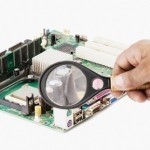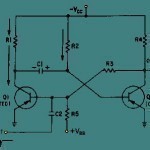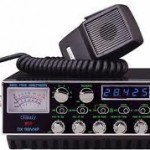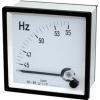RF connectors, also known as a radio frequency connectors, include a number of different types of connectors constructed to work with a wide range of multi-megahertz applications. RF connectors provide a quick and easy way to connect coaxial cables to each other and to other devices. There is a range of capability among the different versions of the RF connector. Some of the more efficient types help to minimize the variance of transmission at the point of connection. The type of fastening mechanism will vary from one type of RF Read More
Car Radio Security Code
When it comes to automobile security, the world is raving about car radio security codes. Most people who use vehicles will often find a car radio security code which is already in use. They may not, however, know about it because different car manufacturers term them differently. They are popularly referred to as radio code, theft-lock, unlock code, security code, anti-thief code, or decoding. The purpose of the radio code is not to protect your vehicle itself, but as the name suggests, safeguarding your radio/stereo. The car radio security code Read More
What is EMI Shielding?

Electromagnetic Interference (EMI) most commonly occurs in the 104 to 1012 Hertz frequency range of the electromagnetic spectrum. A number of sources create this interference, including radio transmitters, electric motors, power lines, fluorescent lights, and computer circuits. If electrical equipment do not have suitable EMI shielding in place, device failure may result from the interference due to the number of sensitive electronic components in most electronic equipment produced today. Although there are many national regulations that restrict products emissions today, taking into account EMI shielding for organically and non-organically created Read More
Pulse Code Modulation
Pulse Code Modulation (PCM) was pioneered by the British engineer Alec Reeves in 1937. The first transmission of a message using PCM was the SIGSALY voice encryption equipment used in high-level Allied communications during World War II starting in 1943. The original primary application for PCM was to convert analog signals into digital format by taking samples of wave forms that fall within 8 to 192 KHz and converting them into a digital number 8 to 24 bits long. In short, PCM refers to the technique of digitalizing an analog Read More
How to Test a Capacitor

A capacitor is used to store energy so that it can provide power to any kind of electrical appliance when it is needed. Over time, though, the capacitor does begin to wear out and when this happens, its effectiveness in powering the appliance can diminish. Therefore, conducting a simple test on the capacitor can provide the necessary insight into whether the capacitor is worn out or if there is something else wrong with the appliance. Testing a Capacitor Before doing anything with the capacitor, disconnect the appliance from the electrical Read More
Modulation
Modulation is the process of varying some characteristic of a periodic wave with external signals. Modulation is utilized to send an information bearing signal over long distances. Radio communication superimposes this information bearing signal onto a carrier signal. These high frequency carrier signals can be transmitted over the air easily and are capable of traveling long distances. The characteristics (amplitude, frequency, or phase) of the carrier signal are varied in accordance with the information bearing signal. In the field of communication engineering, the information bearing signal is also known as Read More
What is a Monostable Multivibrator?

A multivibrator is a device that changes between two states and its own design or an external force powers it. For example, a weight that is placed on a suspended spring will extend the spring to its maximum length as gravity weighs down on it. When the spring is stretched to its maximum length, however, it snaps backs and pulls the weight with it until the spring has recoiled to its original length. When this occurs, gravity and the weight’s potential energy cause the spring to extend again, repeating the Read More
Do I Need a License to Use one of these Radios?

All radio spectrum is legislated or controlled. The FCC requires licenses to operate on some bands, and lets other frequency bands run unlicensed. Radio Services Which Require a License Some of the licensed radio services include: Acronym Full Name URL HAM Amateur http://wireless.fcc.gov/services/amateur/ GMRS General Mobile Radio Service http://wireless.fcc.gov/services/personal/generalmobile/ Radio Services Which Do Not Require a License Some of the unlicensed radio services include: Acronym Full Name URL CB Citizens Band http://wireless.fcc.gov/services/personal/cb/ FRS Family Radio Service http://wireless.fcc.gov/services/personal/family/ MURS Multi-Use Radio Service http://www.provide.net/~prsg/murs_faq.htm While unlicensed, there are still restrictions placed on Read More
Baud Rate
Named after Emile Baudot, the inventor of the Baudot code for telegraphy, a baud is a unit that is synonymous to symbols per second. Therefore, if there was something with 15 Bd, that would mean that something had 15 symbols per second. Not to be confused with bits per second, the baud — which, when using the symbol, must follow the SI nomenclature with a capital first letter and a lowercase second letter — can be any of the many different kinds of symbols while a bit is only 0 Read More
Hz (Hertz)

Hertz is the International System of Units (SI) base unit of measurement for frequency. Hz is the standard abbreviation for hertz. One hertz is defined as “one complete cycle per second,” and can be applied to any periodic event, but is usually applied to sound waves, electrical current, and radio waves. The hertz is the frequency of the cyclical waves in these phenomena. History of the Hertz In 1930, the International Electrotechnical Commission (IEC) named the Hertz after Heinrich Hertz, a German physicist. In 1960, it was adopted by the General Read More


Share on: